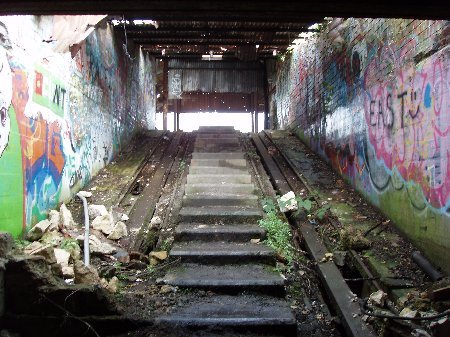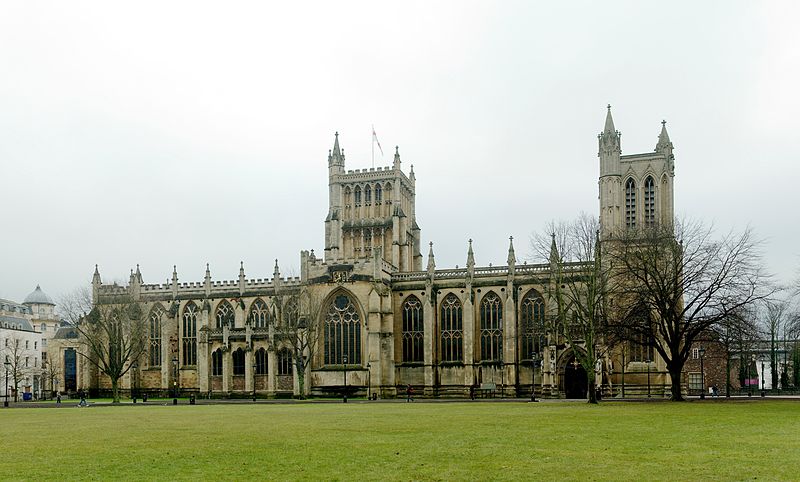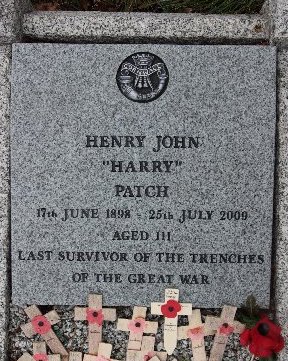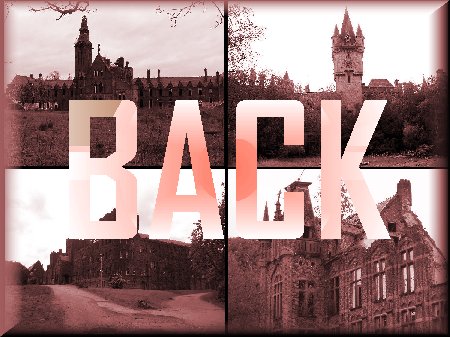 |
Box
is a small village near Corsham in Wiltshire, England, about 5 miles or so east
of Bath along the A4 London Road. Since Roman times a particularly fine stone has been mined here
leaving the entire area riddled with literally miles and miles of tunnels. During
the Second World War the army moved in and created several large
ammunition dumps deep within the mines, and today some are still used by
private companies as large stores. A short distance from Box village the
remains of one of these ammunition dump access tunnels is still accessible
alongside the railway, and we visited it back in 2011.
To see the pictures
we took during our visit to Farleigh Down sidings in 2011 please click the
image above right, and to "fly"
to the Box Quarry location please click the Google Earth application link
to the left.
|
 |
The railway, which runs
from Bristol to London via Bath, passes through Box Hill by way of a
long tunnel built by the famous Victorian engineer Isambard Kingdom Brunel. At one
time there was a secondary tunnel entrance which ran into the mine from
the railway in order to facilitate the loading and distribution of the
quarried stone directly via the railway network.
 |
Bath
Stone is an
Oolitic
Limestone comprising granular fragments
of
calcium carbonate. It was laid down when
most of Somerset was covered by a shallow sea during the
Jurassic Period 195
to 135 million years ago. Layers of marine sediment built up over time and
individual spherical grains were coated with
lime
as they rolled around the sea bed.
The warm, honey colour of the stone gives the
city
of
Bath its distinctive appearance.
An
important feature of Bath Stone is that it is a
freestone, IE one that can be sawn or
'squared up' in any direction, unlike other rocks such as
slate, which forms distinct layers.
It's other peculiar
feature is the fact that it is very soft and consequently very easy to work
upon first extraction, but it hardens markedly after prolonged exposure to
the air. It is therefore the almost perfect stone for construction.
Bath
Stone has been used extensively throughout southern England for churches,
houses and public buildings such as railway stations etc. Notable buildings
include Bristol Cathedral -
LEFT
Truro Cathedral, and in
London, Lancaster House and the
Church of Christ the King in Bloomsbury.
Underground extraction
of Bath Stone still continues in the
Corsham area but on a much smaller scale
than previously. For example,
Hanson PLC operates Hartham Park Quarry
in the Hudswell district.
|
 |
Not
very far from Box is the tiny village of Monkton Combe, and in the church
of Saint Michael, rests Britain's "last
fighting Tommy", Henry Patch (17th.
June, 1898 – 25th. July 2009).
Harry as everyone
knew him, served with the Duke of Cornwall's Light Infantry in the Great
War, fighting on a Lewis gun team at The Battle of Passchendaele in 1917,
where he was wounded in the September and evacuated back to Blighty. When he passed away at the age of
111 years, 38 days, Harry was the third oldest man in the world, and the
oldest man in Europe. Harry first appears
on the 1901 census as a two year old child with his stonemason father
William John, his mother
Elizabeth Ann, and older
brothers George Frederick and William Thomas, at a house in the village
called "Fonthill". The family are recorded at the same address "Fonthill
Cottage" in the
1911 census. Harry
left school in 1913 and started work as an apprentice
plumber in
Bath,
a job which he returned to after his war service. In the Second World War
Harry served as an auxiliary fireman and witnessed first hand the terrible
bombing of Bristol when they were called out to fight the raging fires night after night.
Now you may wonder what all this has to do with Box Quarry... well in
Harry's autobiography
"The Last Fighting
Tommy: The Life of Harry Patch, the Oldest Surviving Veteran of the
Trenches."
ISBN 9780747591153,
an absolutely
fascinating read, he tells of how, even into the depths of his retirement
he would be called upon to guide local services etc. through the mines
whenever a collapse underground caused surface subsidence, so intimate was
his knowledge of the subterranean passageways. We were deeply honoured to
be able to visit Harry's grave to pay our respects and lay a wreath.
|
 |
A lovely pub, The
Quarryman's Arms, sits on top of Box Hill, from where it is possible to
hire the key for one of the
many entrances to the mine complex, and purchase a map which shows you the
error of your (navigational) ways! Without the map finding your way
through the maze of tunnels would be nigh on impossible, and our thanks go
out to the trip organiser Robert, and his able assistant Nick, for
selflessly giving up their time to make the visit so easy and thoroughly
enjoyable.
The
highlight of any wander through Box Quarry, other than finding the way
back out again
 ,
has to be a huge cavern known locally as The Cathedral. A hole at the apex
admits surface light and what at first sight appears to be
an appreciable spoil heap from quarrying actually turns out to be partially composed of
rubbish thrown in from above over the years! The opportunities for photography at this
point are wonderful - not so for much of the rest of the mine though,
because it is totally devoid of light and almost every tunnel looks the
same as the last! In places pit props remain but they are rotting away
alarmingly at a rate of knots with consequential roof falls here, there
and everywhere. Interestingly too, an occasional abandoned mining tool can
still be found. There is a lot of writing upon the rock walls, much of it
in heavy lead pencil, and close examination reveals it to be the
quarrymen's cutting instructions and the like. There are also several
sumps or wells dotted throughout the mine and it would be all to easy to
stumble into one for a short fall and a long soak in the crystal clear,
fluorescent green water! We eventually came to a rather surprising "room"
deep within the heart of the mine where visitors over the years have built
some rather odd sculptures with red engineering bricks. A short while
before we hit the "robot room" as it is often referred to we had arrived
at a large metal mesh barrier, further barred with a mass of barbed wire.
"Military" immediately came to mind and sure enough it proved to be one of
the entrances to the ammunition stores. Beyond the partially demolished
mesh and barbed wire a long corridor a few hundred yards long led us to an
iron door set in a concrete block wall and many of the pillars of Bath
Stone left holding up the tunnel roof had been partially encased in
concrete and squared off. There were also several steel columns further
strengthening the roof, and the sound of ventilation plant whirring away
beyond the door showed this area of the mine still to be in use for
storage of some sort. ,
has to be a huge cavern known locally as The Cathedral. A hole at the apex
admits surface light and what at first sight appears to be
an appreciable spoil heap from quarrying actually turns out to be partially composed of
rubbish thrown in from above over the years! The opportunities for photography at this
point are wonderful - not so for much of the rest of the mine though,
because it is totally devoid of light and almost every tunnel looks the
same as the last! In places pit props remain but they are rotting away
alarmingly at a rate of knots with consequential roof falls here, there
and everywhere. Interestingly too, an occasional abandoned mining tool can
still be found. There is a lot of writing upon the rock walls, much of it
in heavy lead pencil, and close examination reveals it to be the
quarrymen's cutting instructions and the like. There are also several
sumps or wells dotted throughout the mine and it would be all to easy to
stumble into one for a short fall and a long soak in the crystal clear,
fluorescent green water! We eventually came to a rather surprising "room"
deep within the heart of the mine where visitors over the years have built
some rather odd sculptures with red engineering bricks. A short while
before we hit the "robot room" as it is often referred to we had arrived
at a large metal mesh barrier, further barred with a mass of barbed wire.
"Military" immediately came to mind and sure enough it proved to be one of
the entrances to the ammunition stores. Beyond the partially demolished
mesh and barbed wire a long corridor a few hundred yards long led us to an
iron door set in a concrete block wall and many of the pillars of Bath
Stone left holding up the tunnel roof had been partially encased in
concrete and squared off. There were also several steel columns further
strengthening the roof, and the sound of ventilation plant whirring away
beyond the door showed this area of the mine still to be in use for
storage of some sort.
Almost five hours after entering the mine we finally crawled out again,
literally on our hands and knees, to a sodden, grey sky and the top side
world!



|
Below is a
selection of the photographs we took on our Box Quarry trip...
To
view any of the photographs in a far bigger size then click on the
image of your choice and it will open in a new window.
Click right on the
BACK button if you wish to return to our urb-ex
site front page... |
 |
|